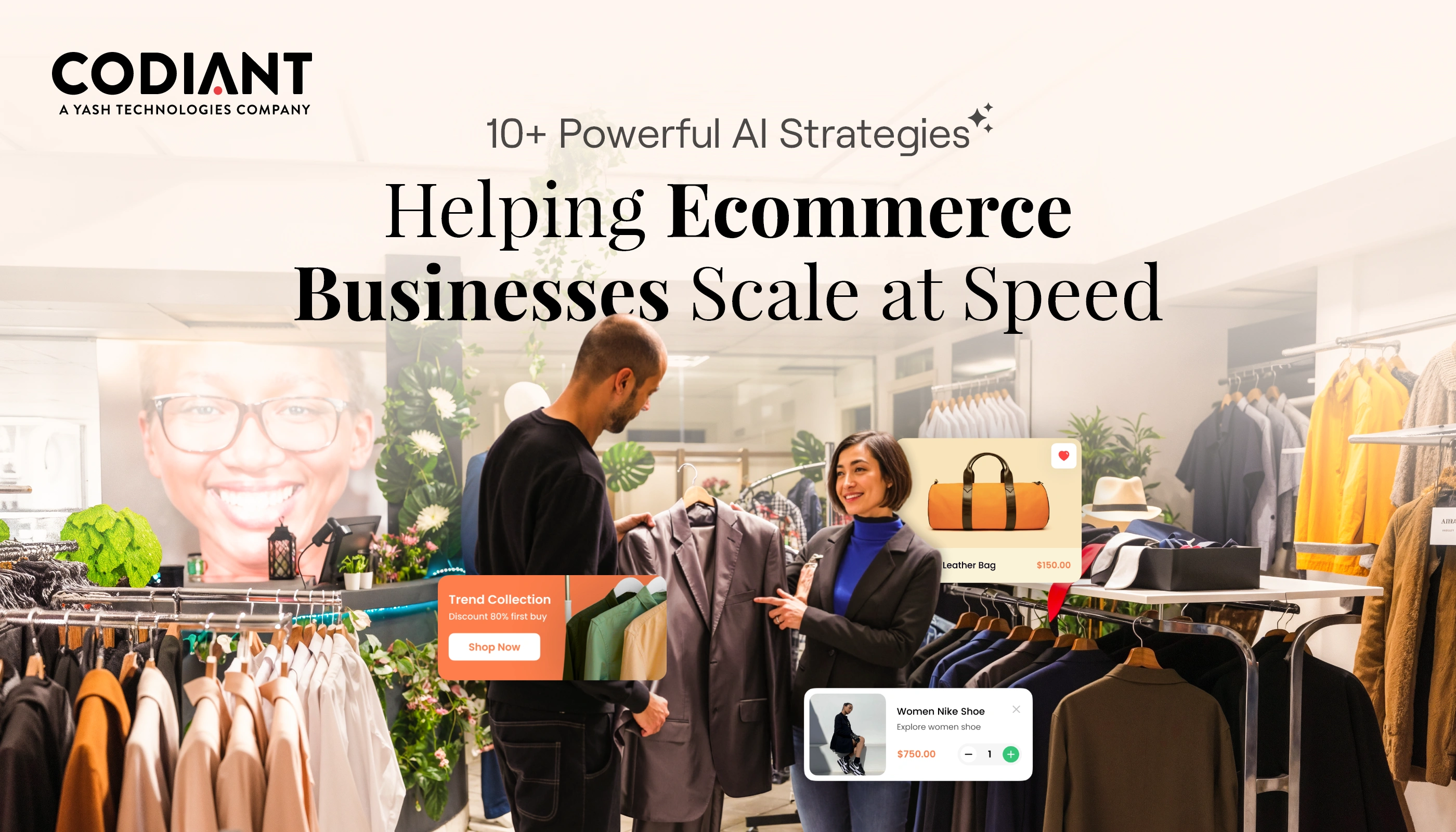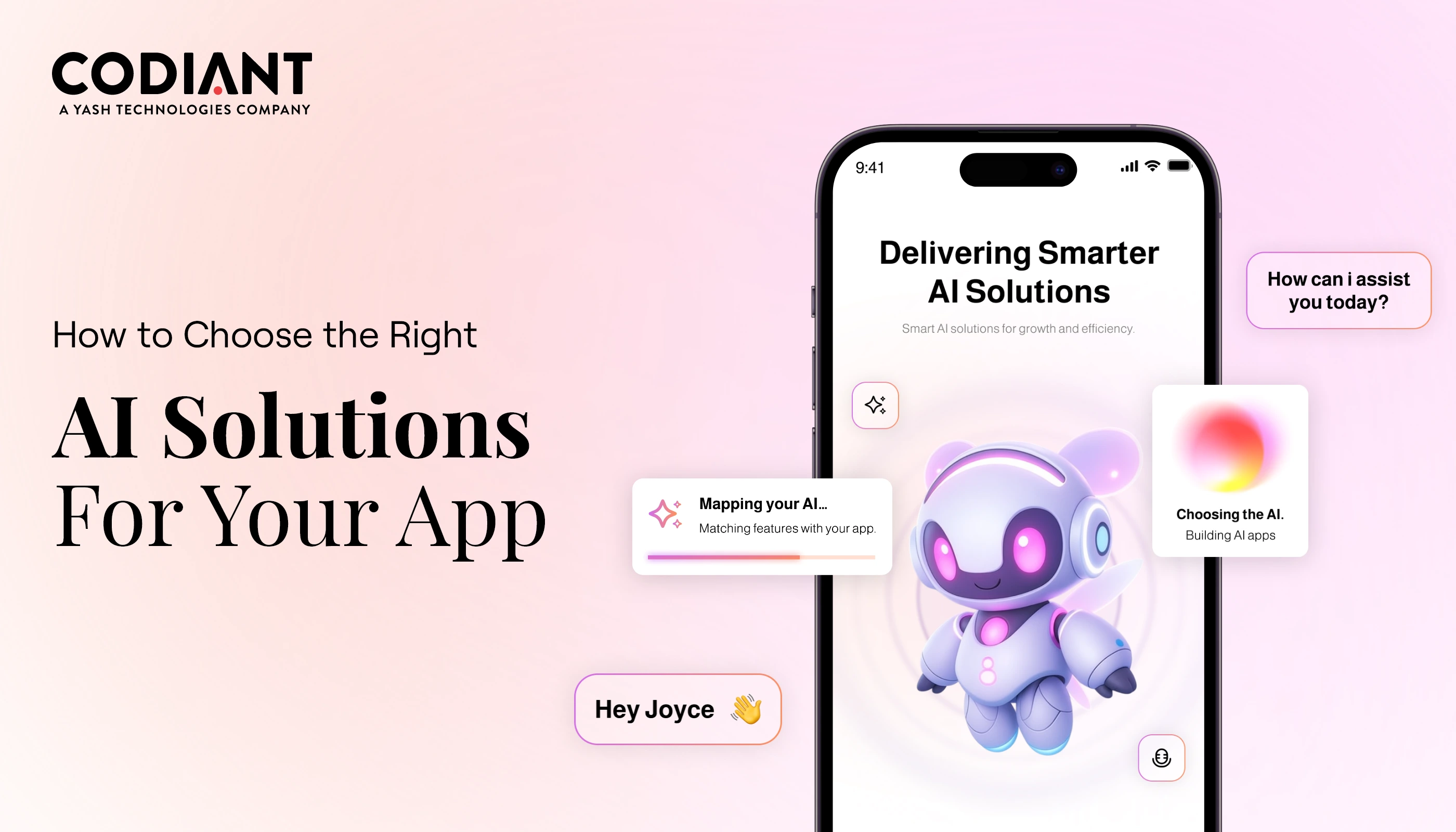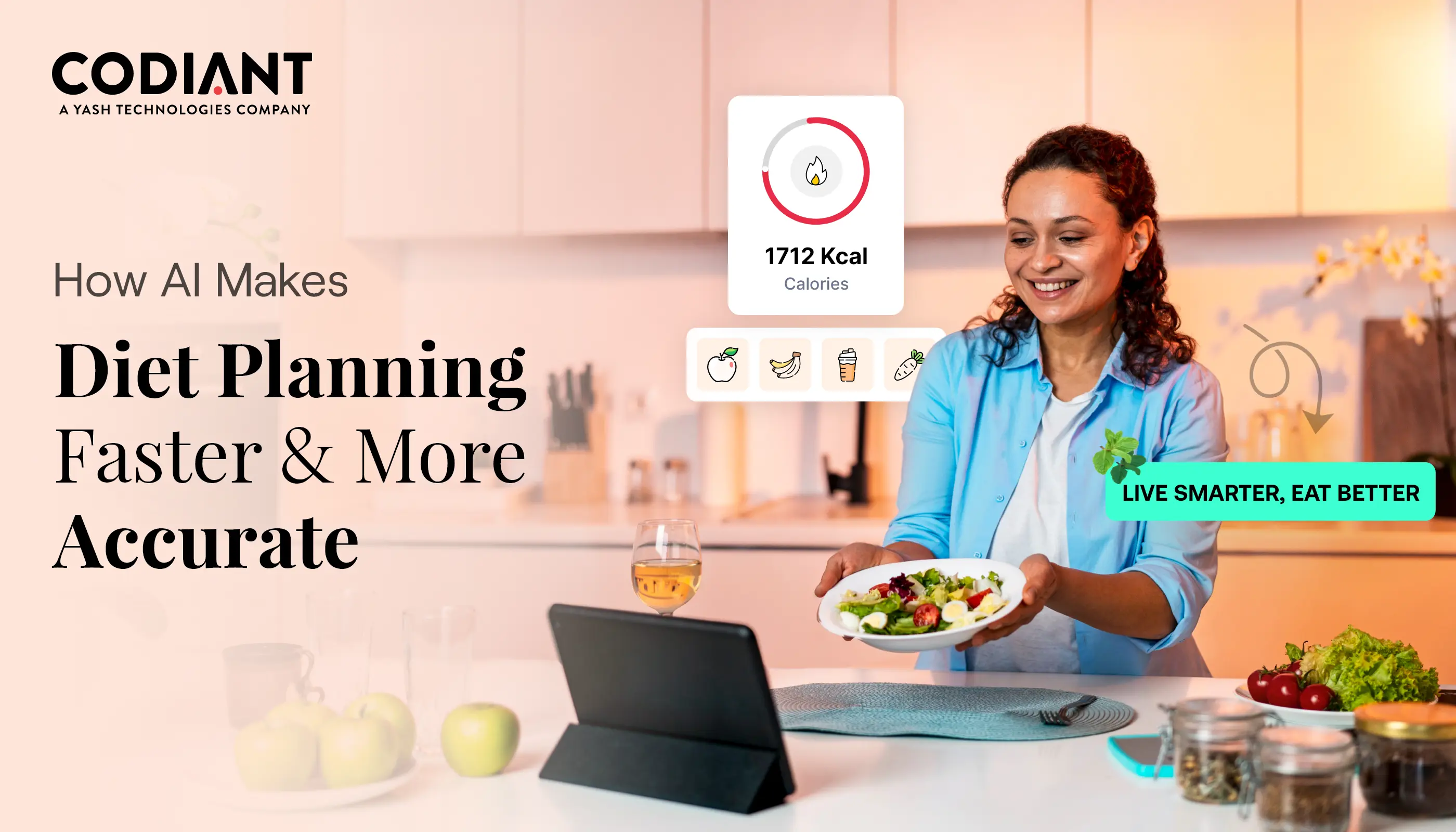Types of Online Shoppers: What You Need to Know
Table of Contents
Subscribe To Our Newsletter

Are you one of the e-commerce businesses that aim to improve their marketing and sales practices? You must understand “Online Shoppers”.
Online shoppers are known as “MODERN DAY NOMADS” aiding to navigate the e-commerce world with a few clicks on mobile devices, laptops, or PCs. This is one of the great digital adventures that has reformed how people buy the products they want.
It is all possible due to ecommerce development that brings a huge revolution from traditional retail shopping into a 24/7 global shopping experience! People need to spend 20% less time in online shopping than buying from any offline stores. The e-commerce apps or websites come with features like fast-loading websites, dependable shipping, product searches, easy navigation, and responsiveness looks appealing to shoppers.
The brick and mortar stores are going online now. It allows online shoppers to browse a range of products, compare prices, read reviews, and make purchases swiftly, enjoying the handiness of shopping from home, work, or anywhere.
However, all online shoppers are different! They might have different behaviors and shopping objectives to navigate online stores and make buying decisions. Knowing the five types of online shoppers – “Casual Shoppers, Need-Based Shoppers, Brand Loyalists, Impulse Buyers, and Research-Oriented Shoppers” is essential.
When a business understands these categories of online purchasers, it can craft a tailored plan or targeted approach to enhance customer satisfaction and drive more sales conversion.
Types of Online Shoppers
Look at the top five types of online shoppers to better understand their behaviors and preferences.

1. Casual Shoppers
Casual shoppers are all about taking it easy online. They don’t have a specific goal in mind, they just like browsing around. Sometimes they even hop on e-commerce sites to enjoy and explore various options! They might grab something on impulse if they see a great discount offer, but they’re not always looking to purchase. In addition to this, casual shoppers often have a lower conversion rate in comparison with people who are actively seeking a particular product.

- Browsing Habits: Casual shoppers often enjoy spending time browsing through various categories and products. For them, shopping is more about fun than necessity.
- Decision-Making: They are easily influenced by eye-catching visuals, engaging content, and social media trends. Price comparisons or reading reviews aren’t a priority for them.
- Purchase Frequency: Their buying patterns are irregular, often prompted by seasonal sales, special offers, or marketing promotions.
- Brand Loyalty: Casual shoppers are open to trying new products based on trends and promotions, with purchasing decisions easily swayed by eye-catching options.
- Engagement with Marketing: They respond well to urgency tactics like flash sales and are drawn to interactive content, such as quizzes or social media challenges.
2. Need-Based Shoppers
Need-based shoppers are those who look quickly and efficiently to purchase what they want. They browse online with a purpose! It doesn’t matter whether they want to stock up on food items, clothing, or simply tick products off their to-do list. Unlike casual shoppers who enjoy browsing for fun, need-based shoppers emphasize on convenience, speed, and practicality.

- Goal-Oriented: These shoppers usually know exactly what they want. It makes their shopping swift, resourceful, and straight to the point.
- Time-Sensitive: Need-based shoppers like responsive and user-friendly websites like responsive and scalable headless commerce platforms that allow them to make easy and hassle-free purchases.
- Product Comparison: They often compare products by looking at features, prices, reviews, and available discounts before buying.
- Minimalist Approach: Need-based shoppers prioritize essential items, focusing on immediate needs for a more efficient shopping experience.
- Reliance on Reviews: They depend on customer reviews and recommendations to make informed purchasing decisions and avoid disappointments.
3. Brand Loyalists
Brand loyalists are basically people who are gripped with certain brands. They usually stick to the brands they love, even if there are inexpensive options out there. These people often spread conversations about their favorite brands to their friends and family. People can find professional brands on social networking platforms by following them, commenting/liking on their posts, and joining a loyalty program.

- Repeat Purchases: Loyal customers often buy the same products repeatedly, contributing to consistent revenue for businesses.
- Emotional Connection: These shoppers have a solid emotional connection with the brand. They often view it as a fundamental portion of their identity.
- Word-of-Mouth Endorsement: Brand loyalists are likely to endorse their favorite brands to friends and family through their words.
- Engagement with Brand Communities: Brand loyalists participate in brand communities on social media and forums, strengthening their connection and loyalty to the brand.
- Willingness to Pay a Premium: They are willing to pay more for their favorite brands, prioritizing quality and reliability over cost in their purchasing decisions.
4. Impulse Buyers
Impulse buyers make purchases quickly. Unplanned, according to mood or according to the season. To increase sales during promotions or seasonal events They are easily influenced by products, advertising, and social media techniques. This makes them ideal for upselling. Retailers can increase sales by creating emergency openings. They can give a special deal, use point-of-sale displays and targeted advertising to drive whim purchases. This leads to better customer engagement and satisfaction.

- Emotional Drivers: Impulse buyers are driven by excitement or a need for instant gratification, leading to quick decisions without considering their needs.
- Attraction to Sales: Promotions, discounts, and flashy ads create urgency and FOMO, boosting excitement and anticipation, encouraging impulsive spending.
- Unplanned Purchases: Impulse buyers often make unplanned purchases when drawn in by attractive deals or limited-time offers.
- Peer Influence: Inspired shoppers often get inspiration from friends or social media. This results in spontaneous purchases driven by social dynamics.
- Visual Appeal: Eye-catching displays and attractive packaging catch the attention of impulsive buyers. It encourages spontaneous decisions and purchases.
5. Research-Oriented Shoppers
Buyers research carefully and are cautious when purchasing products online. They take time to compare prices, gather information, and read reviews before making decisions. These buyers need detailed product specifications, descriptions, and professional reviews to make the right choice. They are less influenced by emotional selling and pay more attention to facts and values. Retailers can gain credibility and increase sales by providing clear information on offers.

- In-Depth Research: They spend a lot of time looking into products, reading reviews, and comparing features to make smart choices. This helps them understand their options before buying.
- Choice for Detailed Info: Research-oriented shoppers like detailed product descriptions, specifications, and user reviews. This information helps them weigh the pros and cons of each item.
- Value-Conscious for Money: They aim to get the best value for their money, often waiting for sales or discounts to make the most of their budget.
- Peer Recommendations: Research-oriented shoppers trust recommendations from friends, family, or online communities, using experiences to boost confidence in purchasing decisions.
- Analytical Decision-Making: They approach purchases methodically, often creating pros and cons lists or using comparison tools to evaluate options for informed decision-making.
Wrapping Up
High traffic and engagement indicate good awareness, but not every shopper or follower boosts your profits. Shoppers or customers vary in value, requiring different levels of attention and experiences. One ideal customer can equal the profit of 376 low-value ones, so focus on nurturing high-value, loyal shoppers.
By doing so, you can personalize marketing efforts, enhance experiences, and drive sales, ensuring a healthier bottom line for your business.
Frequently Asked Questions
The main types of online shoppers include research-oriented shoppers, impulse buyers, value-conscious shoppers, brand-loyal customers, discount hunters, and convenience seekers. Each type has distinct behaviors and preferences, influencing their purchasing decisions.
You can identify your target online shoppers by analyzing customer data, such as purchase history, browsing behavior, and demographic information. Surveys and feedback forms can also provide insights into shopper preferences and motivations.
Understanding different types of online shoppers allows businesses to tailor marketing strategies, create personalized experiences, and enhance customer satisfaction. This targeted approach can lead to increased sales, loyalty, and overall profitability.
To cater to impulse buyers, create a sense of urgency with limited-time offers, use eye-catching product displays, and streamline the checkout process. Promotions and targeted ads can also encourage quick purchases.
Attract value-conscious shoppers by highlighting discounts, promotions, and loyalty programs. Providing detailed product information, comparing features, and showcasing customer reviews can also help them see the value in your offerings.
User experience is crucial in online shopping behavior. A well-designed website, easy navigation, and fast loading times enhance customer satisfaction. A positive shopping experience encourages repeat visits and fosters loyalty among different types of shoppers.
Featured Blogs
Read our thoughts and insights on the latest tech and business trends
How AI Helps eCommerce Businesses Scale Faster: 10+ Proven Strategies
- December 4, 2025
- Artificial Intelligence E-commerce
Running an eCommerce business today means managing more products, more customers, and more data than most teams can handle manually. As order volumes rise, tasks like customer support, inventory planning, product discovery, and marketing start... Read more
How to Choose the Right AI Solutions for Your Existing App
- December 1, 2025
- Artificial Intelligence
Businesses today are under pressure to move faster, deliver personalized experiences, and operate with greater accuracy. This is why many enterprises and startups are now looking for ways to add AI features to their mobile... Read more
How to Enable AI for Smart Diet Planning and Client Progress Tracking
- November 26, 2025
- Artificial Intelligence
Smart diet planning and consistent progress tracking have become essential in a world where people want faster, more accurate ways to manage their health. Traditional methods like manual calorie counting or generic meal charts often... Read more




